Yeah magnets would be a bad idea because of how they would rub against the driver plate when screwing the head one.
The magnets would slide off as you screw in the cells.
EDIT: PD beat me to it.
Add me to the list next update.
Thanks.
So how much more current does one of these high powered cells get over a GA? Assuming all unprotected and hooked up to an xpl or xm-l2.
On 30Q BT's it would be 16A to 20A total, 4A to 5A per cell, maybe little higher with bypass's. On GA's, well, somewhat lower - didn't get a chance to check GA's last night. Think'n about 15-20% lower in amps, but it's a guess. Easy for anyone to test on a single cell FET based modded light. The Q8 is simply 4X a regular light - 4X LED's, 4X cells.
If I remember and got time (![]() ), I'll try this eve or weekend to take readings and post results on GA's and other cells with the Q8 proto.
), I'll try this eve or weekend to take readings and post results on GA's and other cells with the Q8 proto.
Just heard back from Jon at LiIonWholesalers.com bout his protected cells. I''l quote his reply:
Ok, you sure about these specs? 2.5V is pretty low for protected cells, even the 12A-13A max is super high. It sounds great, just want to be sure because I'm being asked for protected cell recommendations many times. Did you guys test them yourselves?
Thanks,
Tom"
Well great. Yeah, I guessed maybe someone knew because as you say it's the same as a single 18650 light. Of course the connections and driver matter some because the led isn't linear, but I figured someone might have a rough experience with it. I can't complain about real readings either though.
Then there is the new Texas buck, which makes voltage drop and half used batteries irrelevant. Of course it's a) 37$ b) you'd want to run the leds in 2S for it to operate best, so need to wire stars since I'm losing hope for the custom PCB but we'll see (that's another $10). c) I don't know what's going on with tailcap boards, I guess you need that too, oh yeah, d) it's never been tested.
All buck drivers have loss's, usually 10%-25%, as noted here: https://budgetlightforum.com/t/-/28594 in the OP, post #2 here: https://budgetlightforum.com/t/-/31322. Reducing loss's usually means increased cost in parts and complexity. Dunno what the Texas Buck driver does, but it's got loss's, just how much is the question. Voltage conversion never comes free.
Refer to Wikipedia article here as well, them mention loss's and efficiency: https://en.wikipedia.org/wiki/Buck_converter
I've never seen anything posted to say otherwise, that buck drivers always have loss's.
Yes, the Texas buck has losses, he was not saying otherwise. I think final efficiency on paper came out to less then 10% though.
I think what he was talking about is that if you use the buck driver in 2s2p or 4s mode with the LED’s wired in 1s4p or 2s2p, then you have enough voltage overhead that even with empty cells it can still provide the full working current that you want until LVP kicks in.
Admittedly though it is quite expensive for longer runtime at full power which the light won’t be able to handle anyways lol. I don’t see myself using it due to the cost.
I've kinda written the book (or two) on what we know about the losses in that driver. Yeah, likely around 10% in that mode of operation at that high of power. That does two things, a) reduced battery life b) reduces turbo time because of heat in the driver, something where we really don't know how well it will handle. If it's only 10% more heat everywhere, that's 10% less turbo time. If it overheats driver parts though because it doesn't dissipate to the case well enough, well then it's even shorter turbo. What the losses don't do though is reduce maximum output.
And it's not about handling longer runtime at full power TA.. It's about still having access to that full power after longer runtimes. OR having long inermediate mode runtimes. That's maybe the best use for bucks for someone who isn't a high power junkie, and is what I use the one I have for. For anyone with serious need for that, the price could be ok. I mean if you're using a light for hours at a time, you can spend a little. For most BLFers though, yeah just getting to not worry about keeping fresh batteries to impress your friends.
Can I still get in on this??
Cheers
So i’m wondering if four protected 3400 mAh panasonic 18650s (3.7 V and 5 A each) would supply enough power for the Q8 to shine its best?
Shine it’s best? It would not be at full brightness but only VTC6’s will do that. They will make it work just fine though and by eye you will not be able to tell the difference in brightness without a meter.
More Battery Tests
Did a comparison of the SANYO GA's vs. the SONY VTC6's:

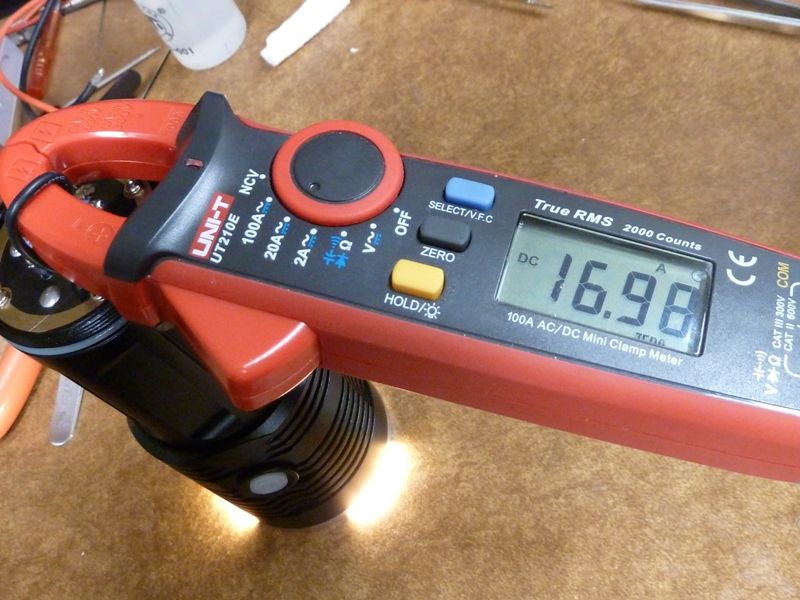
SONY's:

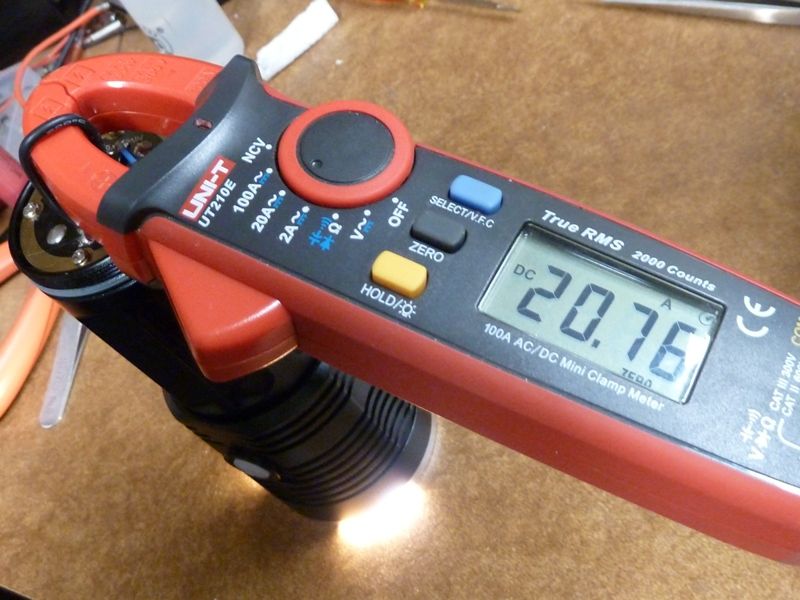
On GA's: 5,680 @start, 5450 @30 secs
On SONY's: 6,390 @start, 6,020 @30 secs
Both were using the battery tube with the spring bypass's because it's rigged up to measure amps with the clamp meter. Results would be about 5% 10% lower on the steel springs.
What this means? a 21.8% boost in amps results in a 12.5% bump in initial lumens, and 10.4% bump after 30 secs. This makes sense actually - we know efficiency with LED's is always better at lower amps, lower voltage.
I got 4 of the protected GA's on order from Liionwholesale.com, so I'll do the same test when they arrive.
Unrelated, but finally setup my SKYRC MC3000 - impressive charger, compared to an Opus:
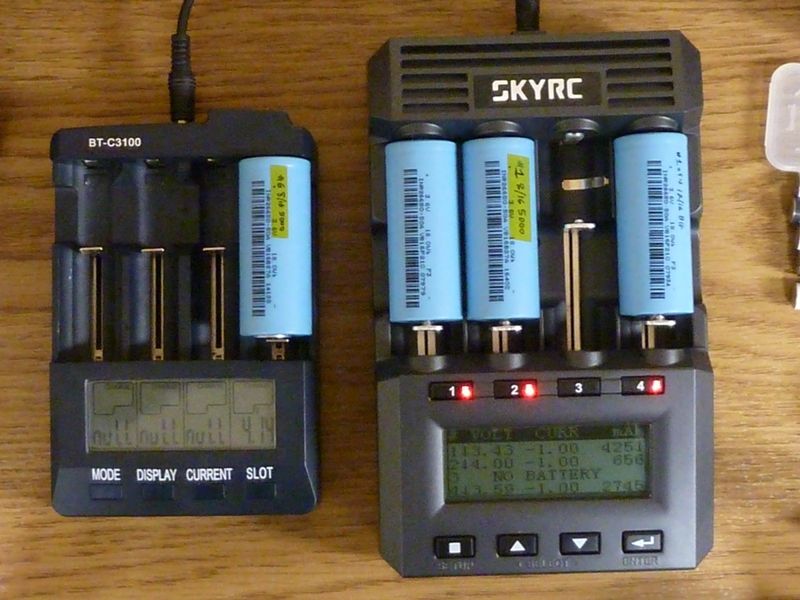
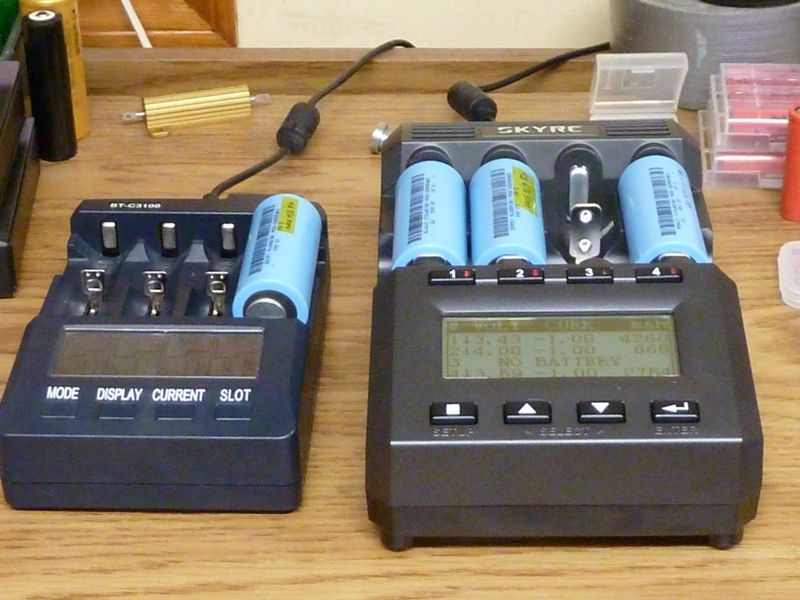
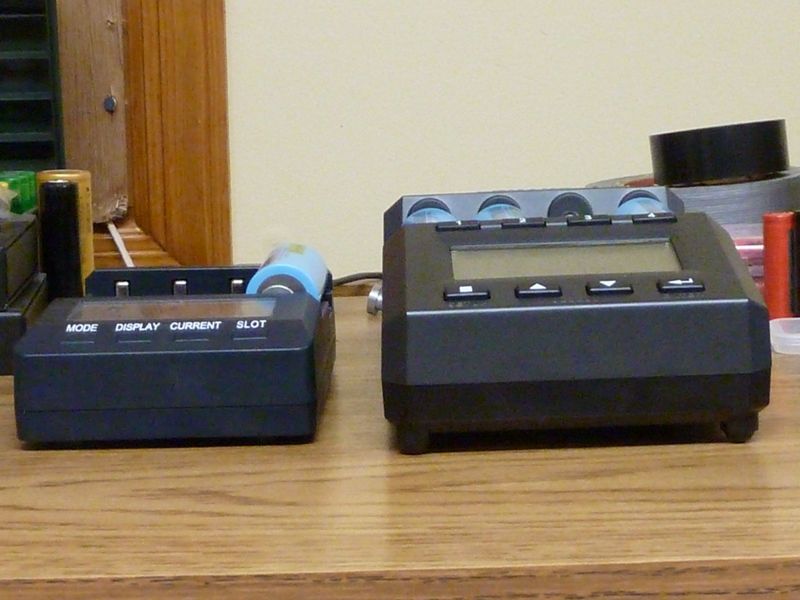
It's a beast in size. So far figured out the basics of charging and discharging. Love the charge rate, up to 3A per cell.
Nice Tom!
If is possible to measure with the cells at 3,6v?
I mean in real life the 4,2v will not be the charging state the cells will be in the longest right?
Wauw that charger is much bigger so it takes 4 26650 cells, sweet I missed that, now I want one ![]()
Yeah, the SkyRC has been on my radar at the same time I bought my OPUS. I just can’t justify it … yet. Maybe with the Q8 I can. Time will tell. I like the programmable functions a lot.
Well 4 18650 cells are a lot easier to charge, the GT would be a better excuse for a quad 26650 charger (especially if one has a S70 or L6, or like in my case both of these.) Hmm dare I say “honey I need this for charging the big ones you know”? LOL
This is important. from 1 to 501 lumens brightness it is a huge difference and everybody can see it with the eye. From 5500 to 6000 is the same 500 lumens difference
If I am reading this correctly: for us to really see a difference by eye from Toms “lower” 5500 lumens the “better cells” need to be able to crank the lumens up to above 8K
It like a 950 vs 1050 lumens EDC, really close for the eyes where a 50 vs 150 lumens keychain light really greatly differ in our perception.
Ah and almost forgt, OP updated, you are nice number 800 on the list!
Ooops, made a typo correction 5% -> 10% in that post.
With the SKYRC, discharging to a specific level is easy, so I could discharge a set of cells to 3.6V and then test.
What I really like bout the SKYRC, is it's insanely precise for a charger, which is what I really wanted: insane charging accuracy. You can calibrate each channel to the 3rd decimal digit in voltage (ex: 4.200V), and even better, set your target charge voltage (ex: 4.21V or 4.22V), etc. Every other charger is spec'd to be accurate to +/- 0.05V, so charging to 4.15V or 4.25V is acceptable by the manufacturer and within spec - that really bugs me, but mostly I've seen them off much less, usually 0.02V or less.
For visual difference in lumens, the threshold we've used here is 20% across the board, but in reality, indoors sometimes it's hard to see 40%, but outdoors with 2 identical lights side by side, I can see a 10% difference.